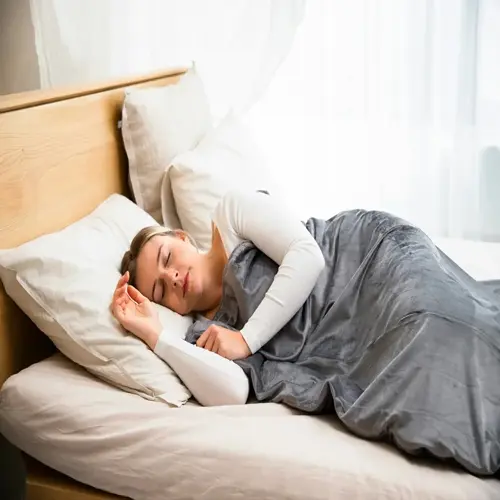How does light exposure timing affect deep sleep?

Written by
Gina Mason
Reviewed by
Prof. Graham Pierce, Ph.D.The timing of light exposure directly affects the quality of your deep sleep through circadian regulation. Your body's internal clock responds to light set points accurately throughout the day. I adjusted my sleep schedule by aligning it with my natural biological rhythms and the exposure to light. The proper timing enables the attainment of the maximum benefit from slow-wave restorative sleep.
Morning sun exposure synchronizes your circadian rhythm very strongly. Get exposure in the first 30 minutes of waking, and it will adequately suppress residual melatonin. I walk my dog at sunrise. This tells your brain to begin the daily cycle properly. It creates sleep pressure for evening somnolence and deeper overnight restoration.
Morning Optimization
- Get 15+ minutes of natural sunlight upon waking
- Use 10,000 lux light therapy lamps in winter
- Face eastward during morning activities
- Avoid sunglasses for full spectrum exposure
Daytime Maintenance
- Work near windows with 1000+ lux exposure
- Take outdoor breaks every 2 hours
- Use full-spectrum LED lights indoors
- Position desks perpendicular to windows
Evening Transition
- Install 2200-3000K bulbs throughout living spaces
- Use smart bulbs with automatic sunset settings
- Wear blue-blocking glasses after dusk
- Replace screens with physical books or audio
Nighttime Protection
- Install blackout curtains eliminating exterior light
- Cover all electronic indicator lights
- Use sleep masks if complete darkness impossible
- Choose amber nightlights for bathroom visits
Steady effort delivers tangible improvement. After just six weeks, my sleep tracker indicated 30% more deep sleep. Your sleep architecture strengthens to a greater extent if you enforce regularity with light patterns. Coddling morning light exposure is paramount, especially on weekends. Your flesh rewards regularity with tremendous restorative ability.
Diagnose frequent errors in light timing. City dwellers should prioritize morning lamp therapy. Shift workers must use blackout curtains while sleeping during the day. I use smart bulbs with programmed color temperatures. Minor adjustments are made to ensure a restorative, deep sleep every night.
Read the full article: 10 Ways to Sleep Deeper Tonight

